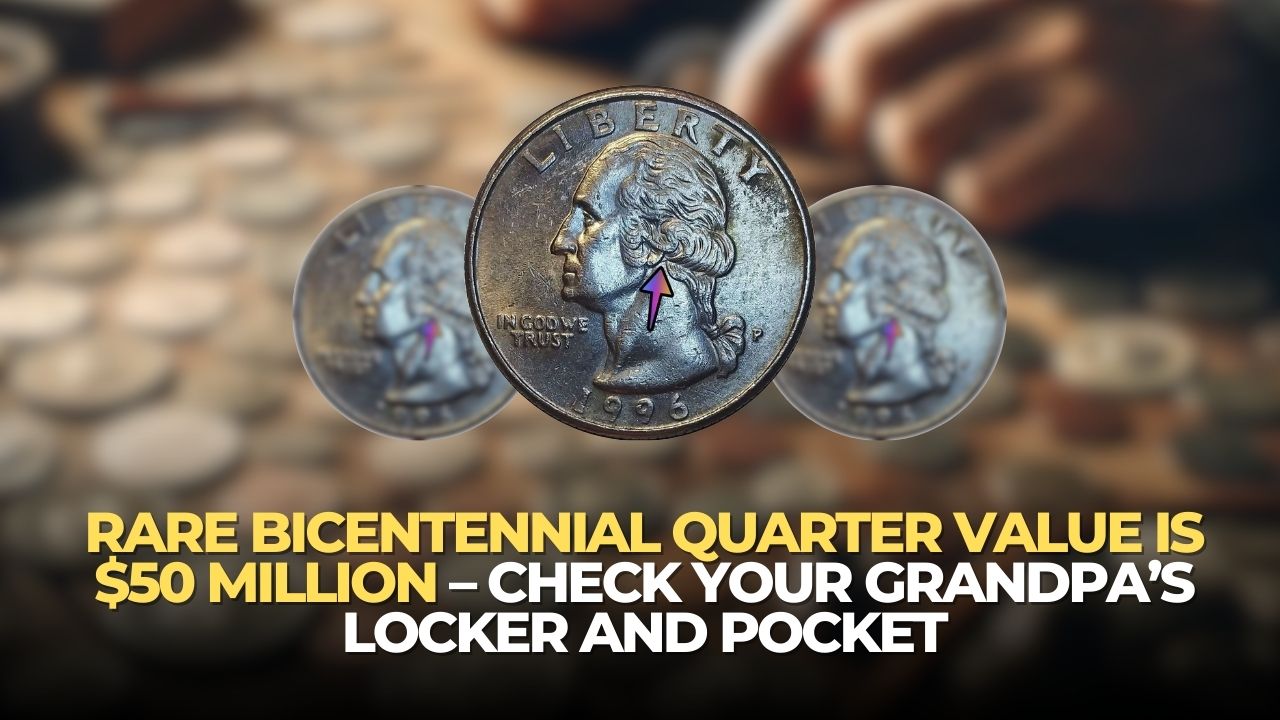Imagine finding a single coin in your grandpa’s old locker that could make you an instant millionaire! The rare Bicentennial Quarter, minted in 1976, is making waves in the numismatic world, with one version allegedly valued at $50 million. This article will guide you through why this coin is so valuable, how to identify one, and what you should do if you think you have a fortune sitting in your pocket change.
What Is the Bicentennial Quarter?
The Bicentennial Quarter was minted in 1975 and 1976 to celebrate America’s 200th anniversary of independence. Unlike regular quarters, these coins feature a special design:
- Obverse (Front): A portrait of George Washington (same as standard quarters).
- Reverse (Back): A drummer boy with a victory torch encircled by 13 stars.
Most of these quarters are only worth their face value of 25 cents, but a few rare variations are worth a fortune.
Why Is This Quarter Worth $50 Million?
A few Bicentennial Quarters have fetched millions of dollars due to their rare errors, special minting conditions, and historical significance. Here are some key factors that make them valuable:
1. Rare Minting Errors
Some of the rarest Bicentennial Quarters have errors, such as:
- Double strikes – When the coin is struck more than once.
- Off-center errors – Misaligned prints creating unique patterns.
- Wrong planchet errors – Some were mistakenly minted on silver blanks.
2. Silver Composition
While most quarters from 1976 are made of copper-nickel, a small number were struck in 40% silver. These silver Bicentennial Quarters are extremely rare and highly sought after by collectors.
3. Perfect Condition (MS-70 Grade)
Coins in perfect condition, graded MS-70 (Mint State 70), can reach astronomical prices. A high-grade silver Bicentennial Quarter in pristine condition could be the one worth $50 million.
How to Identify a Rare Bicentennial Quarter
Here’s what you should look for when checking your coins:
- Look for the mint mark: Coins with a “D” (Denver Mint) or “S” (San Francisco Mint) are more valuable.
- Check the edge: A silver Bicentennial Quarter has a solid silver-colored edge, whereas regular quarters have a copper center.
- Weigh the coin: A standard quarter weighs 5.67 grams, while a silver one weighs 5.75 grams.
- Inspect for errors: Use a magnifying glass to check for misprints, double strikes, or missing details.
What to Do If You Have a Valuable Bicentennial Quarter
If you believe you have a rare Bicentennial Quarter, follow these steps:
- Do not clean the coin! Cleaning can lower its value.
- Get it authenticated: Send the coin to a professional grading service like PCGS or NGC.
- Consult a coin dealer: Get expert opinions on its value.
- Consider an auction: Rare coins often fetch higher prices at auction houses.
Other Valuable Bicentennial Quarters
Not all Bicentennial Quarters are worth millions, but some still hold significant value. Here are a few examples:
- 1976-S Silver Proof Quarter – Worth up to $10,000+.
- 1976-D Double Die Quarter – Can fetch $5,000-$20,000.
- 1976 No Mint Mark Error Quarter – Valued at $2,000-$15,000.
Conclusion
A single rare Bicentennial Quarter could be worth $50 million, but even less rare versions can still bring in thousands of dollars. So, check your grandpa’s locker, old piggy banks, and even your pocket change—you might be holding a hidden treasure! If you think you have a rare quarter, authenticate it, consult a coin expert, and consider selling it at auction. Happy coin hunting!

